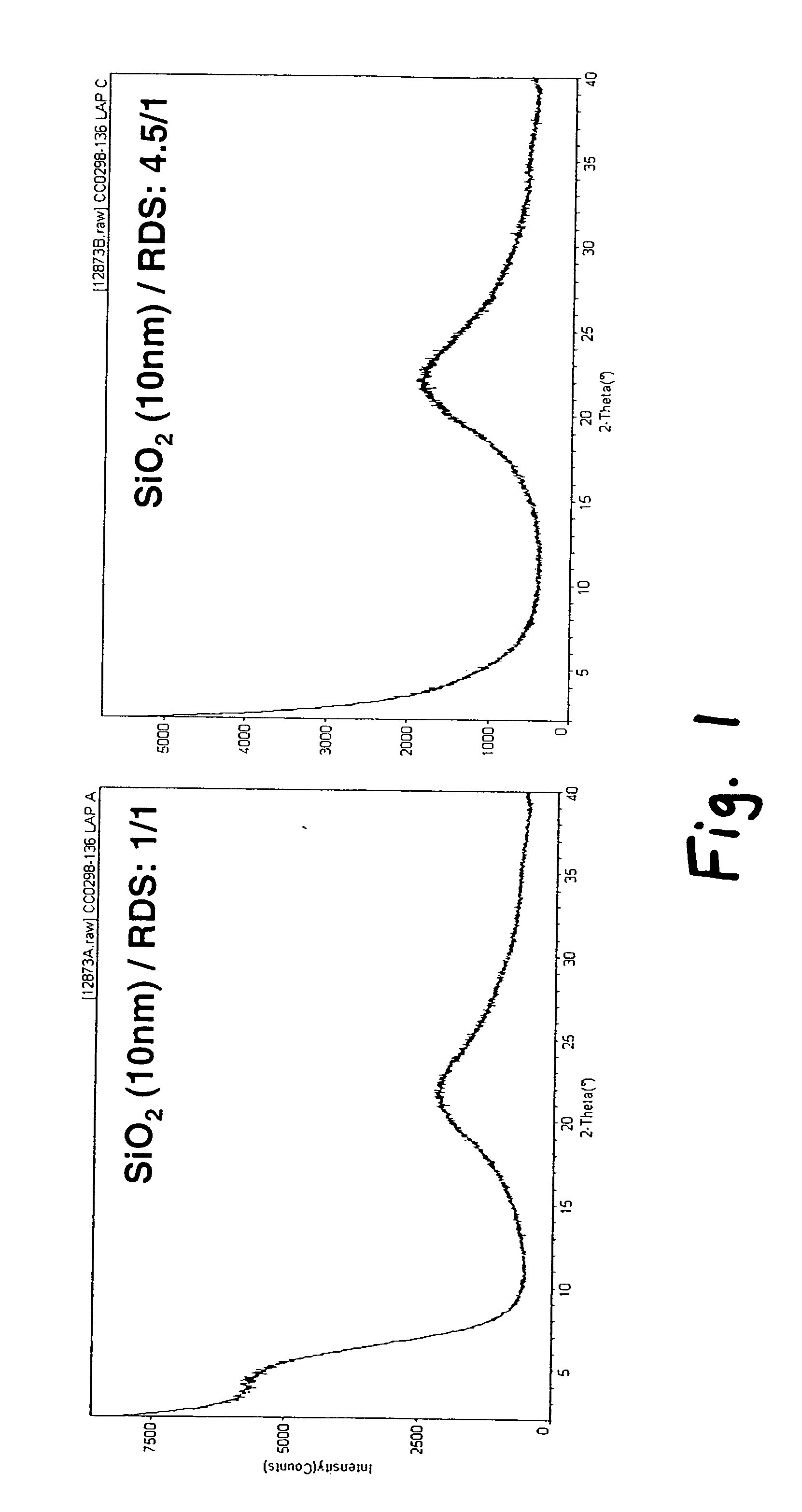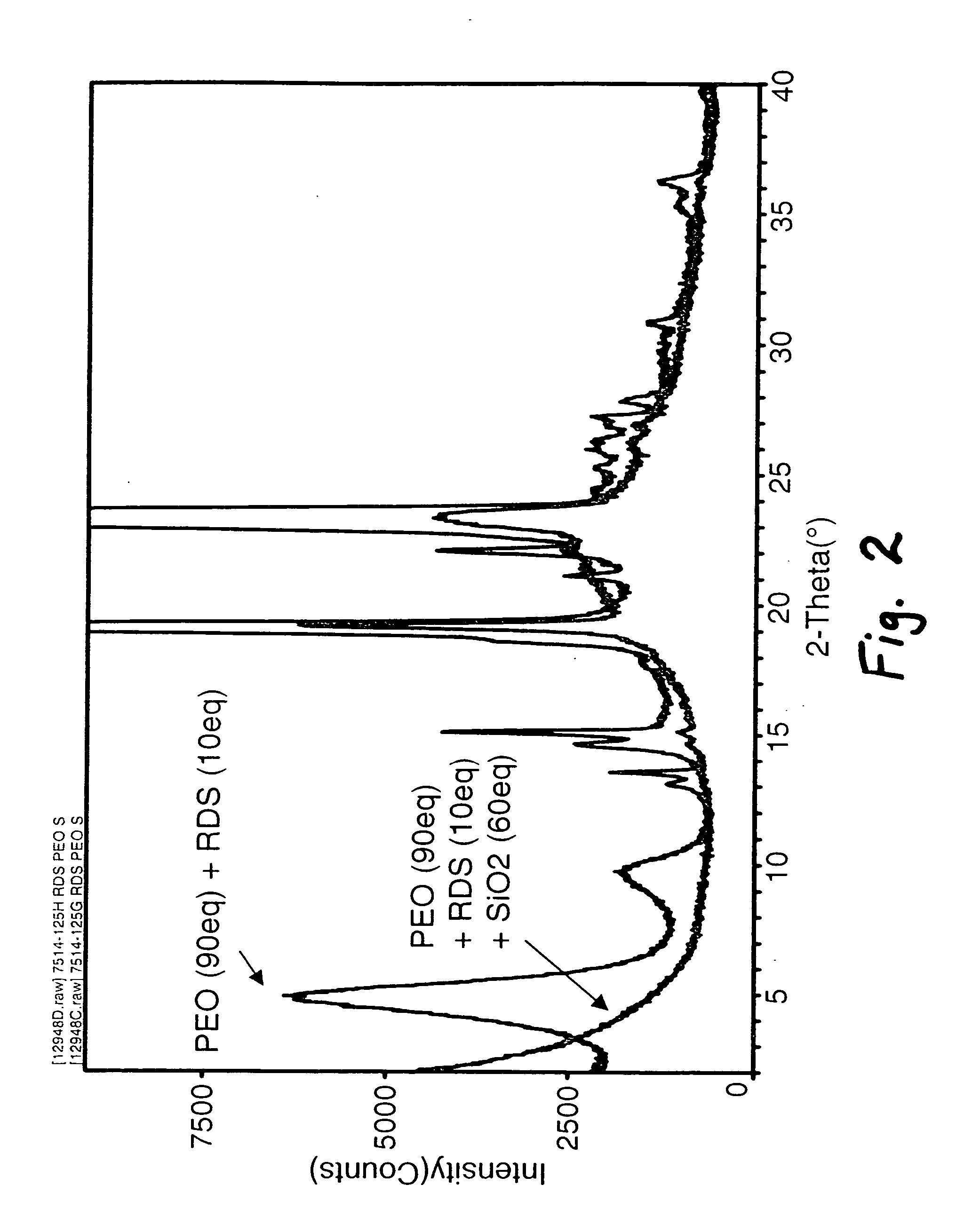Exfoliated clay nanocomposites
a technology of exfoliated clay and nanocomposite, which is applied in the field of exfoliated clay nanocomposite, can solve the problems of high cost of polymer-clay nanocomposite products, and process trial and error at a considerable development cost to the end-user, so as to improve the physical properties, facilitate the transformation into solids, and improve the effect of the produ
- Summary
- Abstract
- Description
- Claims
- Application Information
AI Technical Summary
Benefits of technology
Problems solved by technology
Method used
Image
Examples
examples
[0060] The following examples illustrate the practice of this invention. They are not intended to be exhaustive of all possible variations of the invention. Parts and percentages are by weight unless otherwise indicated.
[0061] Laponite® RDS is a synthetic hectorite clay in the smectite family of clays. Additionally, Laponite® RDS is a water dispersable clay. Table 1 identifies layered material L1 and associated basal plane interplanar spacing. The layered material used was:
TABLE 1(001) Clay BasalPlane InterplanarLayeredSpacing (Å) XRDMaterial IDNameSupplierresultsL1Laponite ® RDSSouthern Clay13.6Products
[0062] All Examples and Comparative Examples presented here were generated using Laponite® RDS as the layered inorganic. The RDS clay (001) basal plane spacing was determined by X-ray diffraction using a Rigaku Bragg-Brentano diffractometer in reflection mode geometry utilizing a monochromator tuned to CuKα radiation. All measurements were performed in ambient air.
[0063] The clay...
PUM
| Property | Measurement | Unit |
|---|---|---|
| Fraction | aaaaa | aaaaa |
| Fraction | aaaaa | aaaaa |
| Diameter | aaaaa | aaaaa |
Abstract
Description
Claims
Application Information
 Login to View More
Login to View More - R&D
- Intellectual Property
- Life Sciences
- Materials
- Tech Scout
- Unparalleled Data Quality
- Higher Quality Content
- 60% Fewer Hallucinations
Browse by: Latest US Patents, China's latest patents, Technical Efficacy Thesaurus, Application Domain, Technology Topic, Popular Technical Reports.
© 2025 PatSnap. All rights reserved.Legal|Privacy policy|Modern Slavery Act Transparency Statement|Sitemap|About US| Contact US: help@patsnap.com


